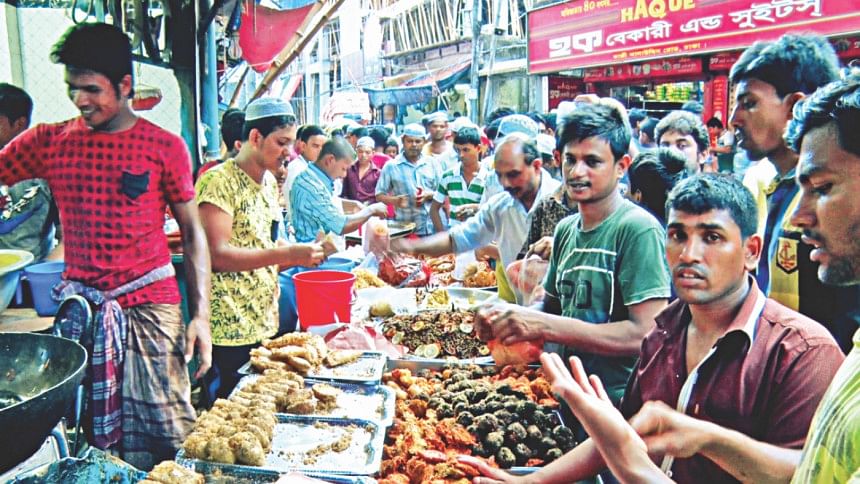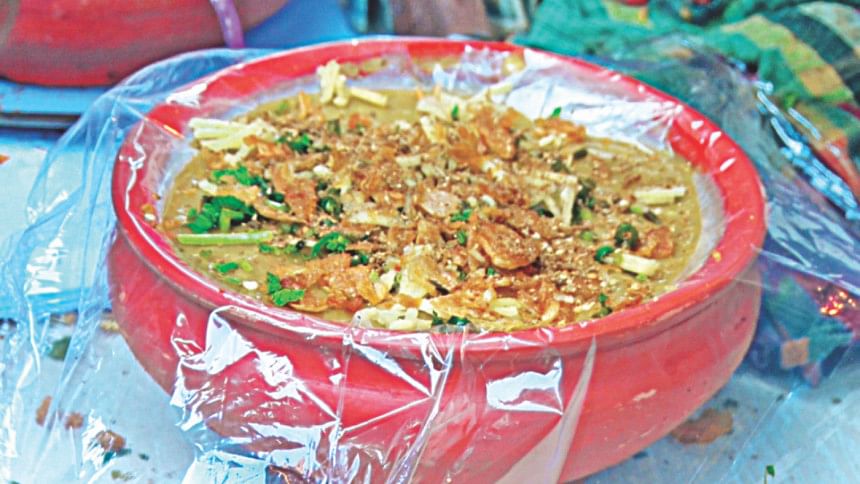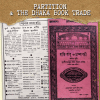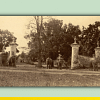Dhaka vs Dhaka: The food derby

We have split Dhaka into two. The old has its unique charm reflecting the rich history and traditions of our city. And there is the New Dhaka, the more “modern” extension of our city. From the old to the new, it is one city all right but in terms of culture and social norms and food, the two are often poles apart.
And this difference can easily be spotted during iftar and sehri. Granted, our love for chola, begooni, piaju, haleem and the likes do not show much of a difference between the Old and the New, but dig deeper and certain interesting differences are revealed.
Perhaps it was showcased the best when two close friends, Mishael Aziz Ahmad and Abed Ali Khan, decided to treat each other with the old and the new. They met in university and have been friends since. Mishael, who now works for Care Bangladesh, resides in Bangla Motor, while Abed, the owner and Managing Director of Old Dhaka International School, hails from Kayettuly, in the heart of the old part of the city.
Last week, Abed had given a tour to his friend, highlighting the iftar scene at Old Dhaka. And then, Mishael did the same for him, presenting the culinary scene that is prevalent in New Dhaka.
THE BEAUTIFUL CHAOS
Mishael arrived at Nazira Bazar -- a culinary hub in Old Dhaka -- at about 5:30pm. By then, the sky was hinting that the day was nearing its end. But one need not look above to realise that: buying and selling of iftar was in full swing.
Abed guided Mishael through the narrow and confusing alleys. The entire locality was a whirlwind of chaos. Numerous rickshaws manoeuvred through pedestrians and other vehicles and street-side sellers were advertising their myriad iftar items by shouting at the top of their lungs. And the air was thick with the smell of a wide array of foods: kebabs, biryanis, and mangoes and pineapples.

Abed led Mishael to Bismillah Kebab Ghor, one of his favourite places. He showed around the assortment of kebabs that were being fried. "It's not that you don't have kebabs in your part of the city, but our kebabs are truly special," he commented.
"Offal is a must-try from here," Abed continued, buying 'gurda fry' and 'khiri fry' whilst Mishael eagerly waited for iftar-siren to go off.
The friends walked from one place to another, often stopping to buy food items -- from 'papor' to 'paratha' -- and also to greet acquaintances along the way.
It seemed Abed was a very popular face there, frequently bumping into friends and neighbours -- handshaking and hugging and catching up. Or perhaps, this is also one of the charms of the old part of Dhaka: neighbours still know each other, the community bonding still runs strong.
After Nazira Bazar, the two friends visited Abul Hasnat Road. With the marvellous dome of the Saat Rowza shrine on the background, it was time for some last minute iftar shopping. From Shaan-e-Mughal, Abed bought haleem. And then, he entered Ananda, an iconic confectionery that has been in business for generations. Apart from purchasing 'jilapi', Abed did not forget to buy some 'poneer'.
"It is almost like a staple for the people of Old Dhaka," he explained. "Poneer is extremely popular and is eaten with tea, snacks and what not."
Finally, the friends were back in Nazira Bazar, where they took seats at Beauty Shorbot. The completely unpretentious and plain eatery serves kachchi biriyani, lassi and lemonade. And their lemonade is legendary!
The small street-side restaurant was buzzing with people as the time of iftar drew near. And finally, the siren went off.
"Nothing beats Beauty's lemonade when you are thirsty. It's very reinvigorating," Mishael spoke after breaking the fast by finishing his drink.
"Old Dhaka is superbly unique. The chaos, the friendliness, the hospitality and the vibrancy are unparalleled. And the iftar, needless to say, is superbly delicious."
Thoroughly impressed Mishael was.
THE MELTING POT
After the culinary adventure in Old Dhaka, it was Mishael's turn to show his part of the city to Abed.
Mishael invited his friend for sehri. They met up at Nawab Chatga, a Chittagonian restaurant.
"Nawab Chatga is a perfect example of what the culinary scene of New Dhaka is all about, "Mishael explained, adding, “New Dhaka features a diverse mix of cuisines. From Italian to Japanese to Korean, the palate of the people of New Dhaka seeks a wide array of foods from different countries and regions."
And hence Nawab Chatga, the Chittagonian eatery, is a perfect example.
The owners, who hail from Chittagong, have brought their cuisine to Dhaka. Mezbaani beef is perhaps the signature dish of the port city. "It's a beef dish like no other, with a unique mix of ingredients and cooking process," Mishael said as he served a spoonful of the dish on his friend's plate of rice.
"Another beef item that you must try is the kaala bhuna," he continued.
With the meal served, the friends indulged in the delicious Chittagonian food. "You may have had a version of kaala bhuna in Old Dhaka," Mishael explained.
"But this is the authentic one. The difference is in the slow and intricate cooking process."
Abed from Old Dhaka ate wholeheartedly, enjoying the beef curries and also the 'loitta fry'. "These are things we would never get in Old Dhaka," he admitted.
New Dhaka is known for its sleek lounges and famous franchises and the large variety of different cuisines. Old Dhaka, on the other hand, sticks to its traditional food, along its unique ambience.
And just like these two friends -- Mishael Aziz and Md Abed Ali Khan -- both the worlds have a lot to be proud of and to learn from one another.

 For all latest news, follow The Daily Star's Google News channel.
For all latest news, follow The Daily Star's Google News channel. 








Comments